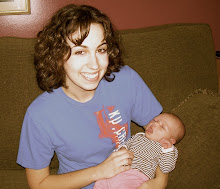After looking at several different photos for the History of Flight, I felt like I needed to make an accordion book. It could be an extreme horizontal timeline or vertical. The poster idea didn't interest me very much. I didn't think it went very well with what I wanted to focus on with the history of flight.
I talked to Andrea and I showed her my ideas about the wind patterns, drafting, and altitude and she thought that I should focus my attention on a draft idea. I was glad of her support with that one because I thought the drafting idea was my favorite idea and I didn't think as many people would think about that.
Next class I brought my ideas to Typography. Unfortunately, I think what happened with my designs is that my timeline focused too much on photos.
This would be the front cover on the accordion book. The "100 Years of Flight" and the plane would be the front and the rest would be folded over. When you opened this up you would see this:
Obviously as you can tell, it is way to many photos. This is the page that took FOREVER to print also. Sorry guys who were trying to print after me...
Another idea was using the same title page, but instead of a time line you see, you would open up the book and there would be little books inside that show the timeline dates for ten-year intervals
This is a very rough draft of what I was thinking about but I felt it got my point across.
Before I talked to Andrea that day, I started again to refine and think of things that I could do to make this more of a typographic project than a info-graphic project:
- more type than graphics you can use graphics but not as much
- drafting
- tracing paper
- lines, rulers, numbers
- as sketches, not pictures
- thick vs thin lines
Then I thought of maybe, I should use one large drafting image and using the lines within the structure of the airplane, I show the timeline. So the timeline would be apart of one airplane. I liked this idea better than using a lot of different images for so many different dates. I also thought utilizing thick and thin lines and rulers or a map key would also help make this more typographic.
Because I started to think more in this way, I asked Andrea if I should consider making posters instead of a book. She said that would be good, but the one problem with the posters is that I could not use the tracing paper to create layers that I would be doing with the accordion book.
The next day I came to class with more files that were primarily posters.



















































